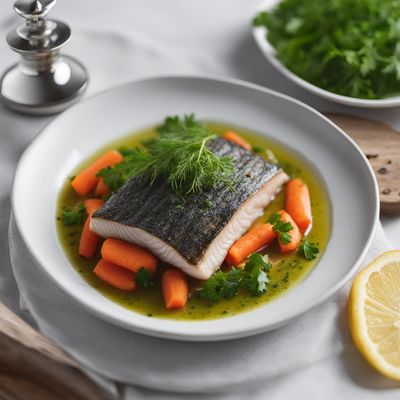
Ingredient
Canned herring
The Versatile Canned Herring
Canned herring is a type of fish that has been preserved in a can, typically in oil or brine. It has a firm texture and a distinct, savory flavor that is slightly salty and briny. The fish is usually filleted and can be enjoyed straight from the can or used in various recipes. Canned herring is known for its high omega-3 fatty acid content, making it a nutritious addition to any diet.
Origins and history
Herring has a long history as a staple food in many cultures, particularly in Northern Europe. It has been consumed for centuries due to its abundance in the North Atlantic and Baltic Sea regions. Herring has played a significant role in the diets of coastal communities and has been preserved through various methods, including canning, to ensure its availability throughout the year. Today, canned herring is enjoyed worldwide and is a popular ingredient in Scandinavian, Dutch, and German cuisines.
Nutritional information
Canned herring is a good source of omega-3 fatty acids, protein, and vitamin D. It also contains essential minerals such as calcium, iron, and magnesium. A 3-ounce serving of canned herring provides approximately 200 calories.
Allergens
Fish (herring)
How to select
When selecting canned herring, look for cans that are free from dents, bulges, or leaks. Check the expiration date to ensure freshness. Opt for herring packed in oil or brine, depending on your preference. Additionally, consider purchasing sustainably sourced herring to support responsible fishing practices.
Storage recommendations
To maintain the freshness and quality of canned herring, store it in a cool, dry place away from direct sunlight. Once opened, transfer any unused portion to an airtight container and refrigerate. Consume within a few days for the best flavor and texture.
How to produce
Canned herring is typically produced by catching fresh herring, filleting it, and then preserving it in cans with oil or brine. This process ensures the fish remains flavorful and retains its texture. Amateur fishermen can catch herring themselves and preserve it using canning techniques or choose to purchase canned herring from grocery stores or online retailers.
Preparation tips
Canned herring can be enjoyed straight from the can as a quick and convenient snack. It can also be used in various recipes, such as herring salads, sandwiches, or as a topping for crackers or toast. For a traditional Scandinavian dish, try making pickled herring by marinating the fish in a vinegar-based brine with onions and spices. Canned herring can also be added to pasta dishes, omelets, or used as a pizza topping.
Culinary uses
Canned herring is commonly used in Scandinavian, Dutch, and German cuisines. It is often incorporated into traditional dishes such as herring salad, rollmops (pickled herring wrapped around pickles or onions), or served with rye bread and butter. Canned herring is also popular in the form of kippers, which are smoked and canned herring fillets.
Availability
Canned herring is widely available in grocery stores and supermarkets worldwide. It can also be purchased online from various retailers.
More ingredients from this category
Recipes using Canned herring » Browse all

Dutch-Style Ceviche
Tangy Seafood Delight: Dutch-Style Ceviche

Togolese-style Fried Herring
Savory Togolese Delight: Fried Herring with a West African Twist

Guinean Spiced Potted Fish
Savory Guinean Delight: Spiced Potted Fish

Swedish Gubbröra with a Twist
Savory Swedish Delight: Gubbröra Reinvented

Polish Pickled Herring Salad
Tangy Delight: Polish Pickled Herring Salad

Hamburg Smörgåsbord
A Hamburg Twist on the Swedish Classic: Hamburg Smörgåsbord

Hamburg Brodetto
Savory Seafood Stew with a Hamburg Twist

Pickled Herring with Onions and Mustard Seeds
Nordic Delight: Tangy Pickled Herring with a Mustard Twist

Crispy Fried Herring
Golden Delight: Crispy Fried Herring with a Danish Twist

Schleswig-Holstein Gomme
North Sea Delight: Schleswig-Holstein Gomme

Schleswig-Holstein-inspired Mini Pizzas
North Sea Delights: Schleswig-Holstein-inspired Mini Pizzas

Open-Faced Delight
Nordic Rhapsody: A Modern Twist on Danish Smørrebrød